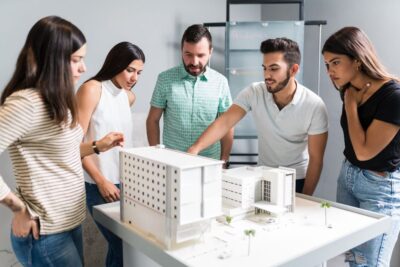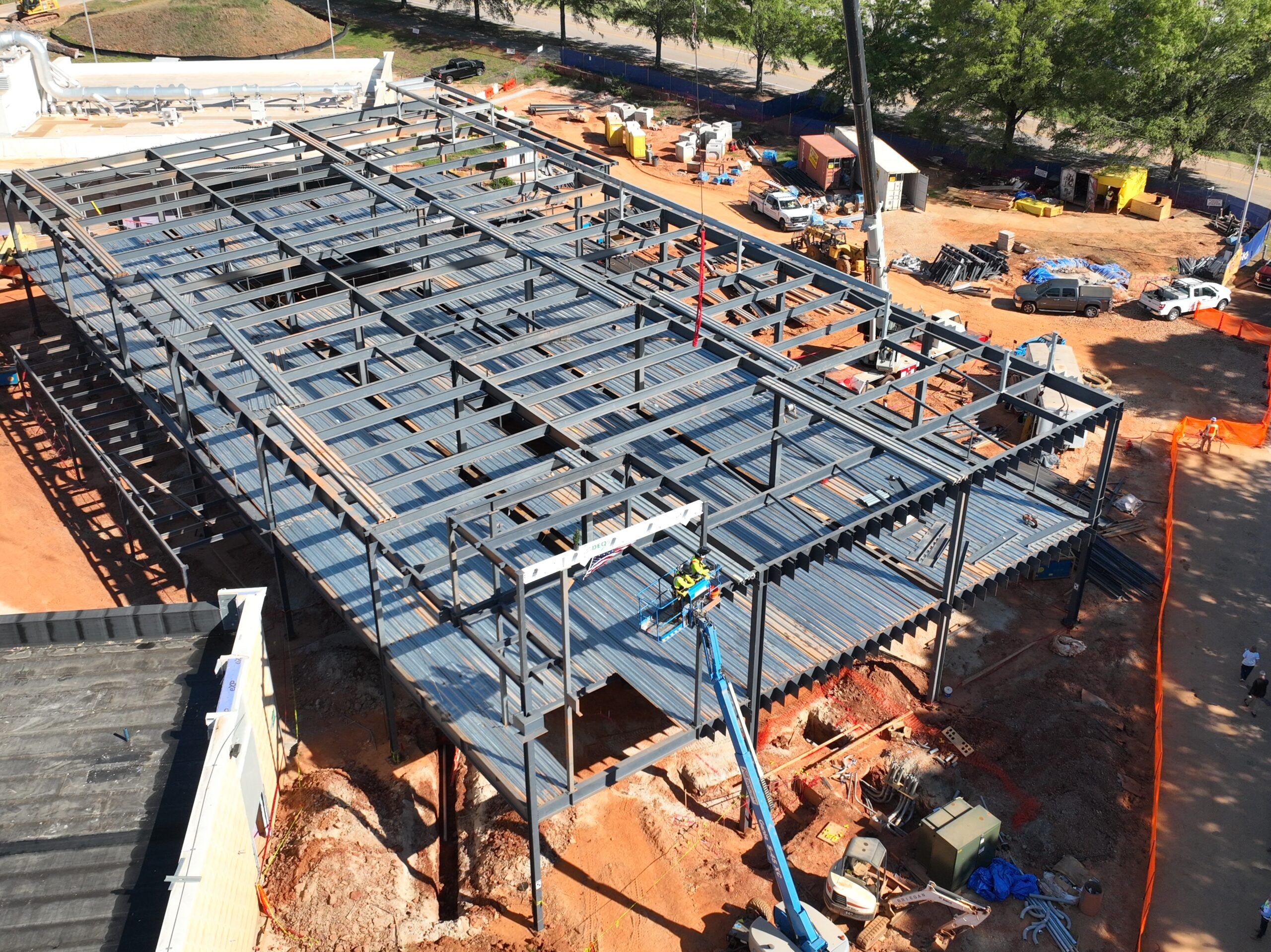Renovating multi-family properties can be a complex and costly endeavor. But, with the right strategies, contractors can ensure high-quality results while keeping costs under control.
If you’re a seasoned multi-family renovation contractor or a construction company, understanding cost-effective renovation techniques is essential for maximizing profitability and delivering value to property owners.
In this guide, we’ll explore key budget-friendly renovation strategies, material selection tips, and effective project management techniques to help contractors optimize multi-family renovations.
The Importance of Affordable Multi-family Renovations
Multi-family properties are high-traffic environments, requiring regular maintenance and periodic upgrades. Property owners seek cost-effective solutions to enhance unit appeal, improve energy efficiency, and increase rental income while keeping expenses minimal.
As a contractor, your role is to strike a balance between affordability and durability. Here’s why affordable multi-family renovations matter:
- Higher ROI – Well-planned renovations boost rental value and attract tenants willing to pay premium rates.
- Tenant Retention – Upgraded units lead to satisfied tenants, reducing turnover costs.
- Regulatory Compliance – Renovations ensure adherence to safety and building codes, preventing legal issues.
- Energy Savings – Efficient upgrades lower utility costs for both tenants and property owners.
To achieve these benefits, contractors must focus on smart renovation tactics that deliver maximum value without unnecessary expenditures.
Cost-effective Renovation Tips for Multi-family Properties
Prioritize High-Impact, Low-Cost Upgrades
Not all renovations require a complete overhaul. Instead of gutting an entire unit, focus on cost-effective, high-impact upgrades that instantly improve aesthetics and functionality:
- Painting – A fresh coat of paint gives units a modern feel at minimal cost.
- Lighting Upgrades – LED lighting enhances energy efficiency and ambiance.
- Cabinet Refacing – Instead of replacing kitchen cabinets, consider refinishing or replacing doors.
- Hardware Updates – New cabinet handles, faucets, and door knobs create a refreshed look.
- Flooring Alternatives – Luxury vinyl plank (LVP) flooring is a durable, cost-effective alternative to hardwood.
Opt for Durable, Low-Maintenance Materials
Selecting the right materials is crucial to minimizing long-term maintenance costs. Choose options that offer durability, easy maintenance, and affordability:
- Flooring: Use durable flooring options instead of carpet, which wears out quickly.
- Countertops: Quartz and solid surface materials are cost-effective alternatives to granite.
- Paint Finishes: Use semi-gloss or satin paints for walls, as they are easier to clean and maintain.
- Plumbing Fixtures: Opt for water-efficient faucets and showerheads to reduce water usage and utility costs.
If you’re looking for multifamily renovation companies to handle your next renovation project, Urban Complex GC, LLC is here to help. Contact us today to discuss your renovation needs and transform your multi-family property cost-effectively.
Budget-friendly Renovation Strategies for Contractors
a) Bulk Purchasing and Supplier Negotiations
Material costs can quickly escalate in multi-family renovations. Save money by:
- Buying materials in bulk to take advantage of volume discounts.
- Building long-term relationships with suppliers for better pricing.
- Sourcing from local vendors to reduce shipping costs.
b) Standardizing Renovation Plans Across Units
A standardized approach helps maintain consistency, reduces labor costs, and speeds up renovation timelines.
- Use the same flooring, paint colors, and cabinetry across multiple units.
- Create templates for common renovations to streamline project management.
- Train workers on a uniform process to improve efficiency and reduce errors.
c) Implementing a Phased Renovation Plan
Instead of renovating an entire building at once, consider a phased approach. This allows property owners to keep some units occupied while others are under renovation, minimizing rental income loss.
- Phase 1: Focus on vacant units first.
- Phase 2: Renovate occupied units as tenants move out.
- Phase 3: Upgrade common areas and exteriors last.
This staged approach helps maintain steady cash flow for property owners and avoids major financial strain.
Smart Multi-family Renovation Ideas to Enhance Value
a) Energy-efficient Upgrades
Sustainable renovations not only attract eco-conscious tenants but also reduce long-term operational costs:
- Install smart thermostats to help tenants control energy usage.
- Replace outdated HVAC systems with energy-efficient models.
- Upgrade to double-pane windows for better insulation.
- Use solar panels where possible to lower electricity bills.
b) Modernizing Common Areas and Amenities
Shared spaces play a crucial role in tenant satisfaction. Budget-friendly upgrades include:
- Enhancing landscaping to improve curb appeal.
- Adding LED lighting in hallways and parking areas.
- Installing smart entry systems for added security.
- Refurbishing laundry rooms with energy-efficient washers and dryers.
c) Enhancing Unit Functionality
Modern renters prioritize convenience. Small functional improvements can significantly increase tenant interest:
- Adding built-in storage solutions to maximize space.
- Installing USB charging outlets for modern connectivity needs.
- Offering pet-friendly amenities such as dog parks or pet-washing stations.
Best Practices for Cost-Effective Project Management
Managing a multi-family renovation efficiently is just as important as selecting the right materials. Here’s how to keep projects on track and within budget:
a) Create a Clear Renovation Timeline
Set realistic deadlines and coordinate tasks efficiently:
- Develop a detailed renovation schedule with clear milestones.
- Ensure contractors and subcontractors follow the agreed timeline.
- Monitor progress regularly to prevent delays.
b) Maintain a Contingency Budget
Unexpected expenses can arise during renovations. Allocate 10-15% of the total budget as a contingency fund to handle surprises without financial strain.
c) Conduct Quality Control Inspections
Ensuring quality workmanship prevents costly repairs down the line:
- Assign a Quality Control Manager to inspect work before project sign-off.
- Verify that all installations and finishes meet industry standards.
- Address issues immediately to avoid rework costs.
Your Questions Answered: Budget-Friendly Multi-Family Renovations
1. What are the most cost-effective renovations for multi-family properties?
The most cost-effective renovations include painting, LED lighting upgrades, cabinet refacing, durable flooring replacements, and energy-efficient fixtures.
2. How can contractors minimize renovation costs without sacrificing quality?
Contractors can minimize costs by bulk purchasing materials, negotiating supplier discounts, standardizing renovation plans, and using durable, low-maintenance materials.
3. How can energy-efficient upgrades benefit multi-family property owners?
Energy-efficient upgrades like smart thermostats, LED lighting, and better insulation reduce utility costs, improve tenant comfort, and increase property value.
Conclusion
Renovating multi-family properties doesn’t have to be expensive. By focusing on cost-effective upgrades, smart material choices, and efficient project management, contractors can deliver high-quality renovations while keeping budgets under control. Prioritizing energy efficiency, durability, and strategic planning ensures long-term value for property owners and tenants alike. For construction projects in Phoenix, AZ, our experienced team at Urban Complex GC, LLC specializes in multi-family renovations that maximize property value. Get in touch with us today for expert consultation and efficient renovation solutions.












